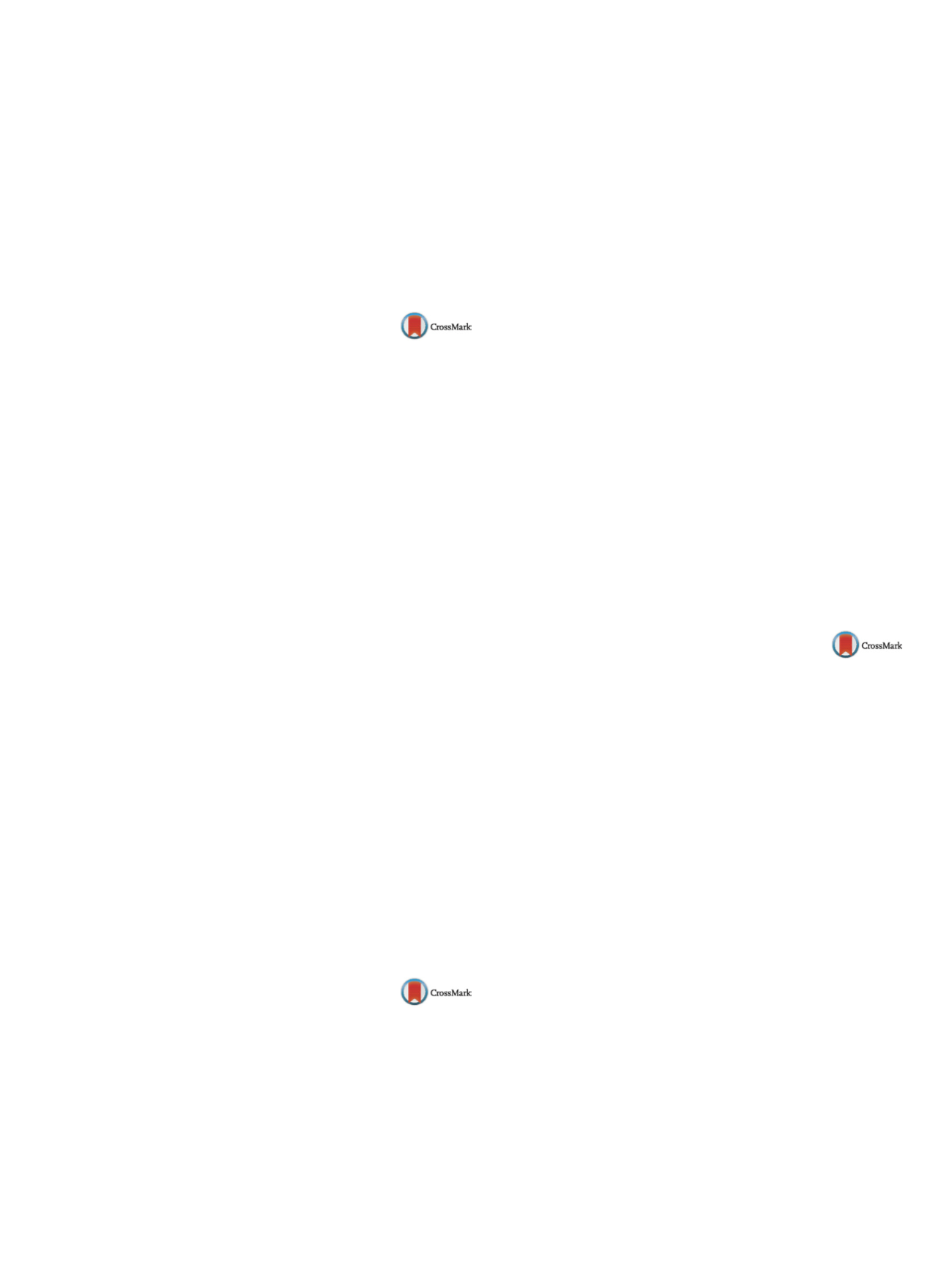

25th European Congress of Psychiatry / European Psychiatry 41S (2017) S772–S846
S803
Results
The study is currently ongoing and preliminary results
will be presented at the conference in April 2017.
Conclusions
The gravity of burden TRS brings to patients extends
itself to their families, carers and clinicians. Further evidence on
which antipsychotic ismore efficacious for patientswith TRSwould
have huge implications in terms of health benefits for the patients,
better informed clinical decisions and also health economics in
general.
Disclosure of interest
The authors have not supplied their decla-
ration of competing interest.
http://dx.doi.org/10.1016/j.eurpsy.2017.01.1550EV1221
Systemic review: High dose
olanzapine treatment for treatment
resistant schizophrenia
Z. Azvee
1 ,∗
, J. Lally
21
Beaumont Hospital, Liaison Psychiatry, Dublin, Ireland
2
Royal College of Surgeons Ireland, Dublin, Ireland
∗
Corresponding author.
Objectives
Schizophrenia is a major mental illness with a pro-
gressive course. Thirty percent of cases of patients with schizophre-
nia do not respond to adequate trials of at least 2 different groups of
antipsychotics are currently classified as having treatment resistant
schizophrenia (TRS). Clozapine remains the gold standard, treat-
ment of choice for TRS. However, clozapine does not come without
its own challenges. Its risk profile, particularly agranulocytosis,
reported in 1% of cases, has led to the necessity of weekly blood
counts within the first 18 weeks of treatment and subsequently
every month with slow dose titration. Clinically, sedation, weight
gain and hypersalivation may further hamper the compliance of
patients. Non-compliance has been reported to cause rebound psy-
chosis. Recent studies have raised questions as to which antipsy-
chotic is most efficacious for TRS. Thus, we conducted a systematic
review of high dose olanzapine treatment for people with TRS.
Method
A systematic review of prospective studies found
through search of PubMed, Scopus and hand-searched key papers
which included randomized controlled trials and open-label stud-
ies which looked at high dose of olanzapine treatment response for
TRS.
Results
The study is currently ongoing and preliminary results
will be presented at the conference in April 2017.
Conclusions
The gravity of burden TRS brings to patients extends
itself to their families, carers and clinicians. Further evidence on
which antipsychotic ismore efficacious for patientswith TRSwould
have huge implications in terms of health benefits for the patients,
better informed clinical decisions and also health economics in
general.
Disclosure of interest
The authors have not supplied their decla-
ration of competing interest.
http://dx.doi.org/10.1016/j.eurpsy.2017.01.1551EV1222
The comprehensive Icf core set for
schizophrenia from the perspective of
psychiatrists: A content-validity study
using the Delphi technique
L. Nu˜no
1 , M.Barrios
2 ,∗
, E . Rojo
3 , J. Gomez-Benito
2 , G.Guilera
21
Hospital Clínic de Barcelona, Department of Psychiatry and Clinical
Psychology, Clinic Institute of Neurosciences, Barcelona, Spain
2
University of Barcelona, Social Psychology and Quantitative
Psychology, Barcelona, Spain
3
Hospital Benito Menni CASM- Sisters Hospitallers, Department of
Psychiatry- International University of Catalonia, Barcelona, Spain
∗
Corresponding author.
Introduction
Schizophrenia is a chronic mental illness associated
with several functional impairments. There has been an increas-
ing interest in the impact of schizophrenia on functioning. The
development of the Comprehensive International Classification of
Functioning, Disability and Health (ICF) Core Set for schizophre-
nia, a shortlist of 97 ICF categories that are relevant for describing
functioning and disability of people living with schizophrenia, has
derived from this interest.
Objectives
This study aims to explore the content validity of this
core set from the perspective of psychiatrists.
Methods
In a 3-round Delphi survey, psychiatrists experienced
in schizophrenia treatment were asked about patients’ problems,
resources and environmental factors they treat in patients with
schizophrenia.
Results
A total of 352 psychiatrists from 65 countries represent-
ing all six World Health Organization regions completed the first
round questionnaire. The response rate at the third round was 86%.
Answers were linked to 422 ICF categories. Of all these, 109 ICF cat-
egories reached consensus (
≥
75% agreement) at the third round.
Eighty-seven out of the 97 ICF categories that form the compre-
hensive ICF core set for schizophrenia were represented in this
list. All the comprehensive ICF core set for schizophrenia categories
reached consensus except five categories.
Conclusions
The content validity of the comprehensive ICF core
set for schizophrenia from the perspective of psychiatrists was
largely supported. However, further research is needed including
other health professionals (e.g., psychologists, nurses and occupa-
tional therapists) to further obtain new content validity evidences.
Disclosure of interest
The authors have not supplied their decla-
ration of competing interest.
http://dx.doi.org/10.1016/j.eurpsy.2017.01.1552EV1223
Clinical and genetic predictors of the
severity and activity of paranoid
schizophrenia
Y. Barylnik
∗
, E. Kolesnichenko , Y. Abrosimova , S. Pakhomova ,
D. Samoylova , N. Filippova , E. Bachilo , A. Antonova , S. Sizov ,
T. Ledvanova , V. Kuryshev
Saratov State Medical University, Department of Psychiatry,
Narcology, Psychotherapy and Clinical Psychology, Saratov, Russia
∗
Corresponding author.
Clinical symptoms, course and outcomes of paranoid schizophre-
nia are polymorphic. Reliable predictors of severity and activity
of schizophrenic process could provide clinicians important prog-
nostic information for adequate and timely implementation of
therapeutic and rehabilitative measures. Overall, 206 patients
with paranoid schizophrenia were examined. Clinical predictors
were collected from hospital records and interviews.
BDNF
gene
Val66Met polymorphism (rs6265 G>A),
DRD2
gene C939T poly-
morphism (rs6275C>T) and
5-HTR2A
gene T102C polymorphism
(rs6313 T>C) were studied as potential markers of prognosis
for paranoid schizophrenia. Results of research testify that the
DRD2
gene C939T polymorphism and
5-HTR2A
gene T102C poly-
morphism cannot be used as predictors of the severity and
activity of paranoid schizophrenia. The MetMet genotype of
BDNF
gene Val66Met polymorphism can be used as marker of favor-
able prognosis for paranoid schizophrenia. Schizoid, epileptoid,
psychasthenic and conformal accentuation of personality in the
premorbid, early onset of psychosis, paranoid and hallucinatory-
paranoid variants of onset predicted more expressed severity of
paranoid schizophrenia. These prognostic factors can be taken into
account in clinical practice.
Disclosure of interest
The authors have not supplied their decla-
ration of competing interest.
http://dx.doi.org/10.1016/j.eurpsy.2017.01.1553

















